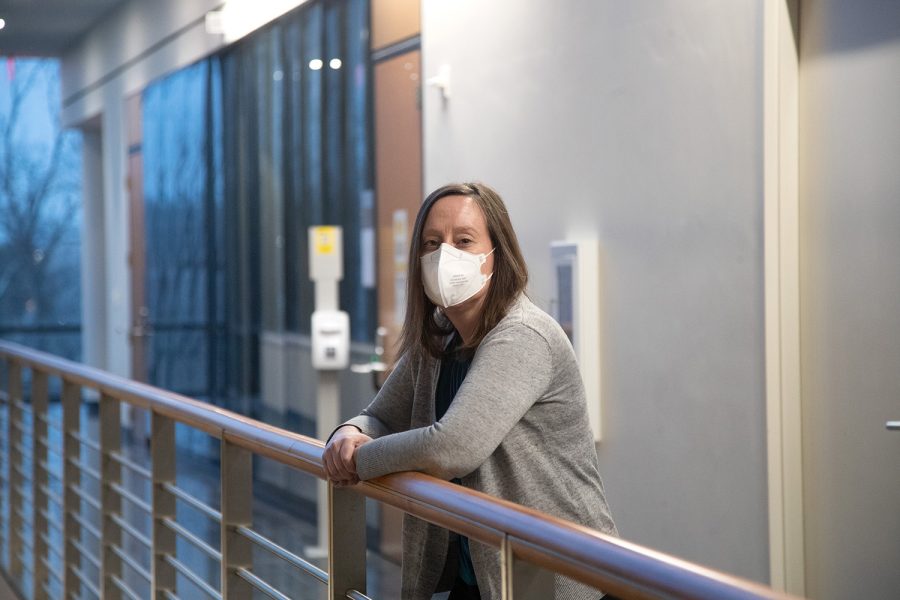Iowa’s Black population faces increased barriers to cancer prevention
Increased barriers to cancer prevention services contribute to Black Iowans having the highest cancer incidence rates of all racial and ethnic groups between ages 50 to 79.
Assistant Professor at the UI Department of Health Management and Policy Whitney Zahnd poses for a portrait at the College of Public Health on Feb. 16, 2022.
February 16, 2022
Iowa’s Black population has the highest cancer incidence rates for racial and ethnic groups between ages 50 and 79 in the state. Trends show cancer affects the Black population at a younger age than white people, who have the highest cancer rates among those 80 and older.
Contributing to high cancer incidence rates, African Americans face increased barriers to cancer prevention resources than other groups.
Whitney Zahnd, assistant professor in the University of Iowa department of health management and policy, said barriers to cancer prevention include lack of access to health care services, health insurance, and higher rates of poverty.
“Another aspect is that some of the policies we have in the United States have led to things like residential segregation and that can then also lead to Black communities sometimes having less access to healthy foods or to places to exercise safely,” Zahnd said.
Segregated communities, particularly those highly populated with African Americans, are associated with higher death rates and lower survival rates of breast and lung cancers, as well as greater chances of being diagnosed with cancer after it has spread.
Paul Gilbert, UI associate professor and head of training for the Prevention Research Center for Rural Health, said the 2021 Cancer in Iowa Report largely focused on racial and ethnic disparities.
Data visualization by Jami Martin-Trainor/The Daily Iowan
“The whole notion of disparities is that these are unnecessary differences, and they’re rooted in some sort of something that’s unfair, unjust, usually along the lines of how resources are distributed,” Gilbert said.
The Cancer in Iowa Report is an annual report produced by the Iowa Cancer Registry to provide information on cancer trends in Iowa. Data is gathered from hospitals and clinics across the state.
Because of greater health disparities, the life expectancy for the Black population in Iowa is only 74.8 years, differing from 79.3 years for the white population, according to the report.
The report found social factors may differ by race or ethnicity, such as income, education level, access to healthcare, and occupation can contribute to cancer disparities and influence psychological, behavioral, and environmental factors that impact health.
Data visualization by Jami Martin-Trainor/The Daily Iowan
The Prevention and Research Center for Rural Health, located in the UI College of Public Health, addresses disparities in health prevention. The center has three areas of emphasis: rural health, health equity, and social justice, and adaptations of interventions to rural areas.
Rima Afifi, UI professor and director of the Prevention and Research Center for Rural Health, said to truly create change to issues and disparities of health equity, changes also need to be made in economics, social structure, and social norms.
“Irrespective of the health outcome, we know that very little of health equity is going to change only by staying within the health care system,” Afifi said.
To address health inequities, the center engages in training at the state level in terms of health equity and social, economic, and structural determinants of health, Afifi said. There are also additional initiatives, she said, such as a poverty reduction program in Muscatine County to influence various determinants of health.
“The PRC [Prevention and Research Center] takes that one step back and thinks about what are those real structural interventions that need to happen so that every health outcome including cancer is influenced,” Afifi said. “And those are the types of projects that we get involved in at the center level.”



